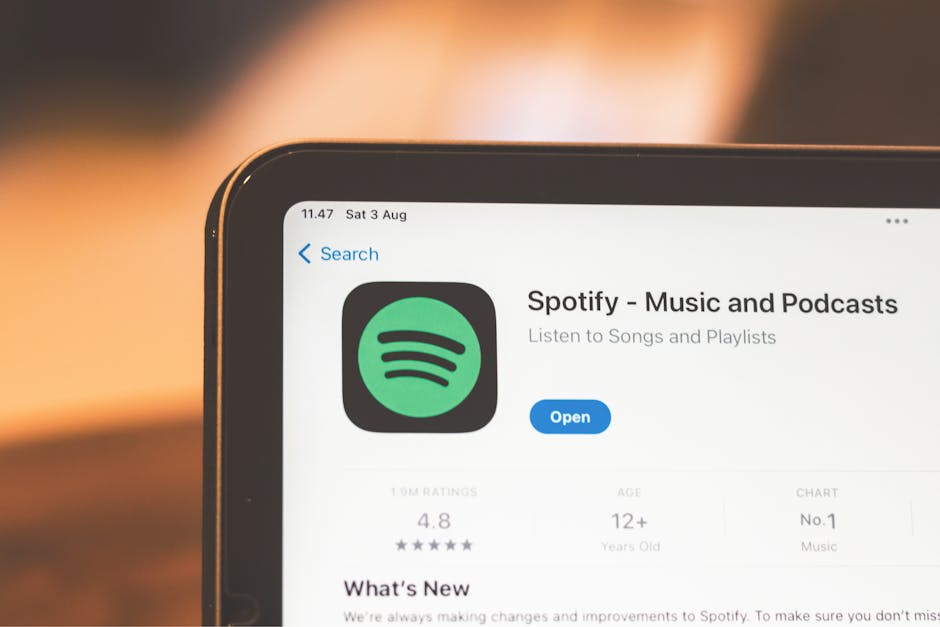The Big Picture: Why These Stories Matter
This week marks a major pulse point in the media industry. From tech-fueled changes to growing concerns around regulation and control, the conversations happening now are shaping the months ahead. It’s not just about what’s trending—it’s about what those trends reveal beneath the surface.
What Makes This Week Stand Out
- Unprecedented strategy shifts among top streaming platforms indicate a turning point in the content economy.
- AI’s rapid integration into editorial workflows is blurring lines between efficiency and authenticity.
- Regulatory momentum is building globally, signaling a new era of compliance and policy enforcement.
- Creators are going independent, proving that influence is no longer confined by traditional media institutions.
These signals aren’t isolated—they’re part of an ecosystem in flux, one where innovation often collides with disruption and where regulation increasingly shapes strategy and output.
Key Themes to Watch
Innovation
- New tools are changing how content is produced and distributed.
- Platforms are experimenting with models that challenge legacy approaches.
Disruption
- Traditional media players face growing pressure to restructure.
- The balance of power is shifting toward nimble, tech-savvy outsiders.
Regulation
- Governments are stepping in with new laws on data, content, and competition.
- Media organizations are rethinking compliance and risk exposure in global markets.
Keep these themes in mind as you explore this week’s biggest headlines—the broader narrative is just beginning to unfold.
Streaming Wars Turn Tactical
The streaming giants are no longer chasing growth at all costs—they’re tightening focus. Netflix is doubling down on ad-supported tiers, slimmed-down content deals, and pushing global originals. Disney+ is shifting toward profitability by integrating Hulu content and testing pricing tiers. Prime Video is building a stronger content identity, filtering out underperforming shows and dialing up sports and premium series.
All this while the average viewer is feeling it. Subscription fatigue is real. Churn is up. People are canceling one service to test another. In response, we’re seeing a pivot toward bundling. Disney is experimenting with Hulu-Disney+ integrations. Amazon throws in Prime Video perks with retail subscriptions. And Netflix is creeping into game streaming—trying to anchor itself in more than just television.
Key figures tell the story. Netflix’s Q1 2024 report showed less subscriber growth, but higher revenue per user. Disney+ lost subs in North America but made gains internationally while increasing margins. Prime Video expanded reach but is pushing paid add-ons hard. The streaming space isn’t collapsing—it’s evolving with sharper knives.
For a deeper look at what’s actually shifting under the surface, read: How Streaming Services Are Reshaping the Media Landscape.
AI Meets Newsrooms
AI is no longer a concept that hovers around media—it’s fully embedded. Newsrooms are using generative tools to write quick-turn articles, summarize reports, and even suggest headlines. Moderation systems powered by machine learning are helping filter comments and flag misinformation before it spreads. Some platforms are integrating AI into layout design, auto-formatting stories for different screens and platforms with minimal human touch.
But with efficiency comes compromise. As bots take over certain content decisions, editorial lines get blurry. Is a breaking news post generated by AI just as credible as one crafted by a human reporter? Audiences are noticing, and trust is on the table. Some outlets are leaning into disclosure; others are keeping quiet.
Layoffs tied to these efficiency upgrades aren’t helping morale. Reporters, editors, and producers are being cut as media companies double down on automation. AI isn’t replacing humans entirely—not yet—but it’s clearly shifting priorities. In more than a few places, tech is the new newsroom backbone. The real question now isn’t if AI will reshape journalism—it’s how much humanity we’re willing to trade along the way.
Media Mergers & Acquisitions You Should Watch
The media industry is undergoing a profound shift fueled by consolidation. As legacy platforms struggle to stay competitive and digital-first brands scale up, mergers and acquisitions are reshaping the playing field. Here’s what you need to know this week.
Consolidation Across Print, Digital, and Broadcast
Media companies are combining resources to stay relevant in a fragmented marketplace. This wave of consolidation spans across:
- Print: Traditional publishers are partnering or merging to reduce costs and share distribution.
- Digital: Niche digital media brands are being acquired to enhance content diversity and audience reach.
- Broadcast: Regional and national broadcasters are pooling infrastructure and negotiating power to better compete with streaming giants.
Top Deals Making Headlines
Several high-profile deals are currently underway—or have just closed:
- MediaCorp and VoxFusion: A strategic merger aimed at dominating the Gen Z and Millennial news markets.
- StreamLine acquires LocalView TV: Consolidating local broadcast networks under one digital-first umbrella.
- BoldPost buys Control+Media: Expands its podcast and video offerings with fresh audiences and production teams.
Who Stands to Win?
- Large media conglomerates: Gain wider distribution, ad network reach, and deeper content libraries.
- Niche platforms: Acquisitions give them resources to scale and access to bigger talent pools.
- Investors: Stand to benefit from streamlined operations and increased valuation multiples.
What This Means for Audiences and Independent Outlets
While consolidation can improve production value and accessibility, it raises concerns about diversity and independence in journalism:
- Fewer independent voices: Smaller outlets may struggle to survive or be absorbed into larger, more homogenized entities.
- Audience fatigue: With fewer owners controlling more brands, content overlap and repetition may increase.
- Access vs. authenticity: Streamlined services may enhance convenience, but some editorial uniqueness could be lost in the process.
As consolidation continues, media consumers and creators alike must stay informed. The power balance is shifting—and who owns the narrative matters more than ever.
Creators Are Becoming Powerhouses
More creators are stepping off borrowed platforms and building their own digital homes. Substack newsletters, custom video hubs, and independent membership communities are on the rise. It’s not just about ego—it’s about control. Control over revenue, branding, audience data, and content terms. Getting free of the algorithm means creators make the rules.
The shift from ad-based income to membership-driven models is also gaining traction. Patreon, Ko-fi, and direct subscriptions are powering real sustainability. No more chasing the next brand deal or trying to reverse-engineer the latest mystery tweak in the monetization algorithm. When your audience pays for the experience directly, it’s cleaner, and in the long run, more resilient.
That said, going solo is harder. It’s slower to scale, and building your own traffic engine from scratch takes time. There’s also the backend—payments, support, marketing—that platforms like YouTube or Instagram handle by default. But for creators willing to own the process, the tradeoffs are worth it: higher margins, fewer middlemen, and loyal communities.
This isn’t just a trend—it’s a power shift. Creators are becoming media companies. Only leaner. Smarter. More connected to their fans.
Regulatory Shake-Ups
Data privacy and content control are entering a new phase—fast. In the U.S., lawmakers are pushing ahead on tighter rules around user tracking, especially for platforms that target underage users. The proposed American Privacy Rights Act could become the strictest federal digital consumer protection yet, and companies are already preparing for the paperwork, audits, and legal exposure it could bring.
Europe is further along. The EU’s Digital Services Act (DSA) is officially in play, requiring platforms to disclose how content is moderated and ads are personalized. It’s painful for some, particularly U.S.-based platforms that now face heavy fines for non-compliance. Asia’s approach is more fragmented; Japan and South Korea are eyeing stricter data governance, while India ramps up its censorship focus with sweeping content takedown mandates.
What’s this mean for media companies? Strategy adjustments, fast. Many are beefing up internal legal and compliance teams. Others are shifting toward zero-party data collection—asking users directly for permission and preferences. More are leaning into owned platforms and subscription models that don’t rely on third-party ad data. Either way, the freewheeling era of digital media is getting new walls. Adapt or get regulated out.
Closing Signal: How Media Is Evolving Right Now
This week saw another round of headlines that underscore just how fast the industry is mutating. Spotify laid off 1,500 employees as part of a restructuring tied to its podcasting investments. The move signals a shift toward leaner content operations, even among tech-forward players. Meanwhile, Google quietly launched its AI-driven video summaries into YouTube Shorts—a sign that generative tools aren’t just back-end support anymore, they’re front and center in the product strategy.
On the streaming front, Paramount+ announced a new live-sports add-on, jumping into the bundle game with both feet. It’s less about content now and more about frictionless packages that keep users locked in.
Looking ahead to next week, all eyes are on Apple’s rumored push into news aggregation via AI. If confirmed, it could be a major disruptor for digital publishers dependent on third-party platforms for traffic.
Final note: media is not waiting for anyone. Strategies that worked six months ago may already feel dated. Stay sharp, stay lean, and don’t forget—it only takes one trend to flip the board.



